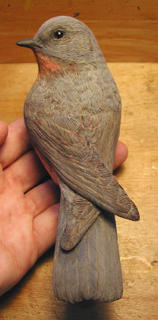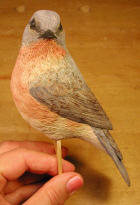

Here it is, the final entry for this blog. Last night I met with the women involved and delivered the sculpture into their hands. I think they liked it- they seemed really excited about it
We met at the Austin, Texas Woodcraft store where I used to work.
Coincidentally, the Central Texas Woodcarvers' Association was meeting there at the same time. Really. . . I didn't plan it that way, but it was great to be able to 'show and tell' my latest work with lots of carving buddies.


Its funny how just a little bit of hay seems to finish off this piece. Until the hay was attached there was 'something missing'- something that was just not quite right. Voila! A couple of pieces of hay and all is well.
Thanks to everyone for their interest in my project. Here is a link to my web site where you can see many more carvings and other woodworking projects:
http://www.geocities.com/donpbk/woodworks-by-donna.html
See you there!












































